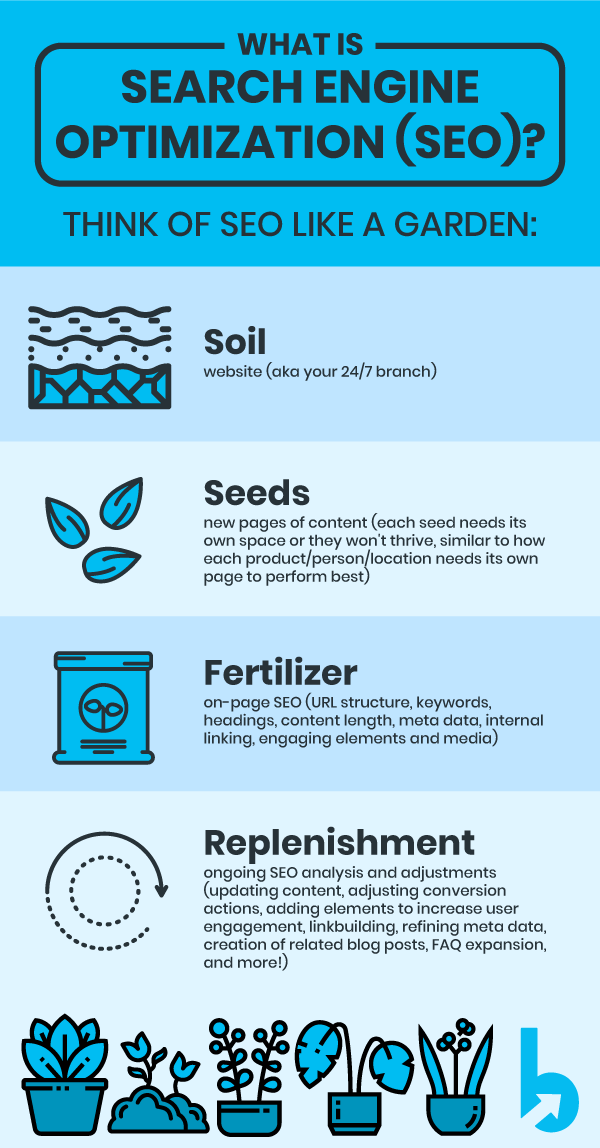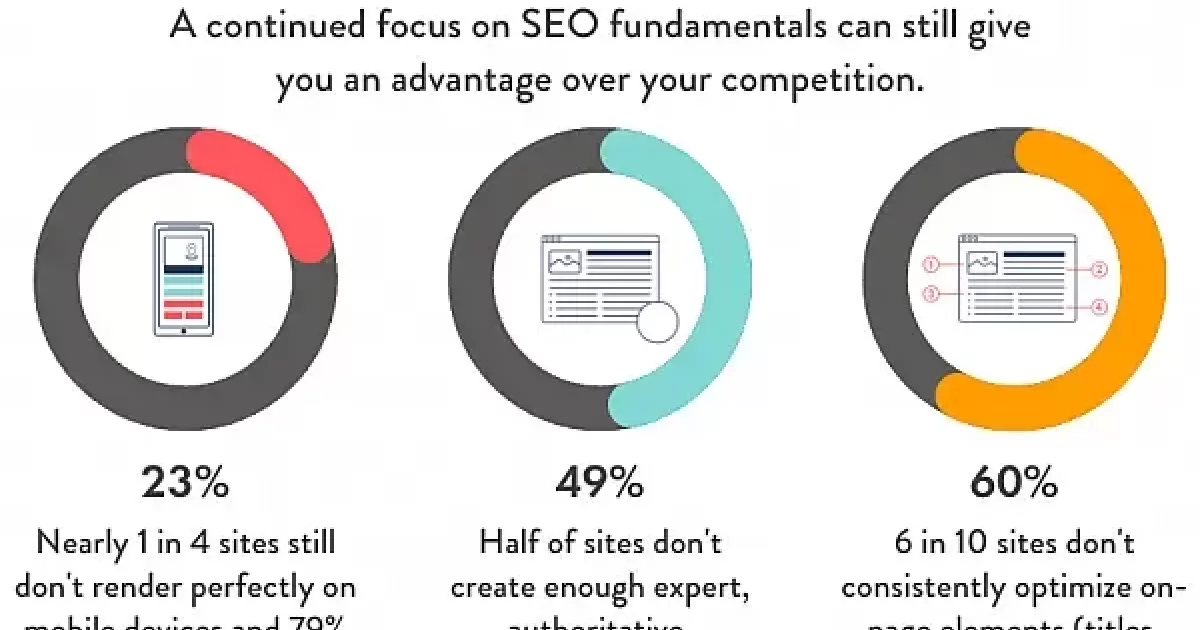Unlock the secrets to boosting your financial website’s visibility and success with powerful SEO strategies and tips. Don’t miss out!

Image courtesy of via DALL-E 3
Table of Contents
Introduction to SEO for Financial Websites
In the vast online world, where there are millions of websites competing for attention, it’s crucial for financial websites to stand out. This is where SEO comes into play. Understanding and implementing SEO can greatly boost the visibility and success of a financial website. Let’s explore what SEO is, why it’s important for financial websites, and what you can expect to learn in this article.
What is SEO?
SEO stands for Search Engine Optimization. In simple terms, it’s the practice of optimizing a website to make it more visible and rank higher in search engine results. When someone searches for a specific term related to your financial website, good SEO can help your site appear at the top of the search results, making it more likely that users will click on your link.
Why is SEO Important for Financial Websites?
For financial websites, having good SEO is crucial. It helps your site gain credibility and trust from users, as appearing at the top of search results signals that your site is reputable and relevant. Additionally, effective SEO tactics can attract more clients to your financial services, ultimately leading to increased traffic and potential business growth.
Overview of What We’ll Learn
In this article, we will delve into various aspects of SEO that can benefit your financial website. We will explore the importance of keywords, creating quality content, improving website structure, building backlinks, optimizing for mobile users, utilizing analytics, and more. By understanding and implementing these strategies, you can enhance your website’s visibility and attract more visitors.
Understanding Keywords
Keywords are like clues that help search engines find the right websites. Just like when you search for something online and type in specific words, websites use keywords to tell search engines what they are about. These keywords are essential in helping your financial website show up when people search for things related to your content.
Finding the Right Keywords
Choosing the right keywords is like picking the perfect words that match what your website is all about. For a financial website, you want to use words that people would use when searching for money-related information. You can find these keywords by thinking about what your website offers and what your visitors might be looking for. Tools like Google Keyword Planner can also help you discover popular keywords that people are using to search online.
Using Keywords Effectively
Once you have your keywords, it’s important to place them in the right spots on your website. This could be in your page titles, headings, and throughout your content. By using keywords effectively, you can help search engines understand what your website is about and increase the chances of people finding it when they search online.
Creating Quality Content
Quality content is like the heart of a website – it keeps visitors interested, engaged, and coming back for more. When it comes to SEO for financial websites, creating high-quality content is essential for attracting and retaining clients. Let’s dive into what quality content is all about and how it can help boost your financial website.

Image courtesy of www.bankbound.com via Google Images
What is Quality Content?
Quality content isn’t just about words on a page – it’s about creating valuable and relevant information that resonates with your target audience. Good quality content is informative, well-structured, and easy to read. It should provide answers to the questions your visitors have and offer them something they can’t find elsewhere.
Writing for Your Audience
When writing content for your financial website, it’s crucial to keep your audience in mind. Think about what they are looking for, what questions they may have, and how you can provide them with helpful information. Use language that is simple and clear, avoiding jargon that might confuse or alienate your readers.
Updating Content Regularly
One of the keys to keeping visitors coming back to your financial website is to update your content regularly. Fresh, relevant content not only keeps your audience engaged, but it also signals to search engines that your site is active and up-to-date. Consider adding new blog posts, updating existing pages, or creating new resources to keep your website current and appealing.
Improving Website Structure
When it comes to creating a user-friendly website, navigation plays a crucial role. Imagine navigating through a website like finding your way through a city – you need clear signposts and roadmaps to guide you. Similarly, having a simple and clear menu with well-organized links can help visitors easily find the information they’re looking for. This not only improves user experience but also makes it easier for search engines to crawl and index your website.
Using Headers and Titles
Headers and titles are like the chapter headings in a book – they provide a roadmap for readers to understand the content better. In the world of websites, headers and titles play a similar role in organizing your content and improving readability. By using headers to break up your content into sections and titles to summarize key points, you make it easier for both users and search engines to navigate your site.
Optimizing URLs
Have you ever looked at a web address and wondered what it all means? Well, URLs are like digital street addresses that tell both users and search engines where to find specific information on your website. By creating SEO-friendly URLs that are easy to read, include relevant keywords, and accurately describe the content they lead to, you can enhance your website’s visibility and help users understand what to expect when they click on a link.
Building Backlinks
Backlinks are an essential part of boosting your financial website’s SEO. But what exactly are backlinks, and why are they so important? Let’s dive deeper into this topic to understand how backlinks can help improve your website’s visibility and credibility.

Image courtesy of venngage.com via Google Images
What are Backlinks?
Backlinks, also known as inbound links, are links from other websites that direct users to your site. These links act as a vote of confidence for your content, signaling to search engines that your website is a valuable and reputable source of information. The more high-quality backlinks you have pointing to your site, the more authority and trustworthiness search engines will attribute to your website.
Getting Quality Backlinks
So, how can you earn quality backlinks for your financial website? One effective way is to create compelling and informative content that other websites will want to link to. This could include writing guest posts for reputable financial blogs, participating in industry forums, or collaborating with influencers in the finance sector. By offering valuable insights and information, you can attract links from authoritative sources that will enhance your website’s SEO.
Avoiding Bad Backlinks
While backlinks can boost your SEO efforts, it’s crucial to avoid bad backlinks that could harm your website’s reputation. Bad backlinks are links from low-quality or spammy websites that could lead to search engine penalties. To steer clear of bad backlinks, regularly monitor your website’s link profile using tools like Google Search Console and disavow any harmful links that could be detrimental to your SEO efforts. Focus on earning links from trustworthy and relevant websites to build a strong backlink profile that will benefit your financial website in the long run.
Mobile Optimization
More and more people are using their smartphones and tablets to browse the internet. That means if your financial website isn’t optimized for mobile users, you could be missing out on a lot of potential visitors. Mobile optimization ensures that your site looks and works well on smaller screens, providing a better user experience for those accessing your site on the go.
Responsive Design
Responsive design is a way of building websites that automatically adjust their layout and elements to fit the screen size of the device being used. This means that whether someone is visiting your financial website on a desktop computer, a smartphone, or a tablet, the site will adapt to provide the best possible experience. This is crucial for mobile usability and can help improve your SEO ranking.
Testing Mobile Friendliness
There are simple tools available online that can help you test if your website is mobile-friendly. These tools will analyze how your site appears on different devices and highlight any issues that need to be fixed. Some common tips for improving mobile friendliness include making buttons large enough for easy tapping, ensuring text is readable without zooming, and optimizing images for quick loading on mobile connections.
Utilizing Analytics
Understanding how your website is performing is crucial for improving its visibility. Let’s dive into how analytics can help you make informed decisions to boost your financial website’s SEO.

Image courtesy of www.workshopdigital.com via Google Images
What Are Website Analytics?
Website analytics are like detective tools that reveal how users interact with your site. They track important data points such as how many people visit your site, how long they stay, and which pages they view.
Key Metrics to Track
There are a few key metrics you should pay attention to:
Page Views: This tells you how many times a page on your site has been viewed. It’s a good measure of overall traffic.
Bounce Rate: This shows the percentage of visitors who leave your site without interacting further. A high bounce rate may indicate a need for better content or user experience.
Session Duration: This reveals how long visitors spend on your site. Longer sessions indicate engaged users.
Using Analytics to Improve SEO
By analyzing these metrics, you can pinpoint areas for improvement on your website. If you notice a high bounce rate on a particular page, you may need to optimize its content or layout. If visitors are spending very little time on a page, it might need more engaging elements.
Regularly checking your analytics and making data-driven decisions will help you fine-tune your website for better SEO performance. Remember, small adjustments can lead to significant improvements!
Summary and Next Steps
In this article, we’ve covered key strategies to boost the SEO of your financial website. Understanding and implementing these strategies can help your website gain more visibility and attract your target audience. Here’s a quick recap of the main points discussed:
- Keywords: Choosing relevant keywords is crucial for improving your website’s search engine rankings.
- Quality Content: Creating engaging and useful content can keep visitors on your site longer and establish credibility.
- Website Structure: A well-organized website with clear navigation helps both search engines and users easily find information.
- Backlinks: Building quality backlinks from reputable sites can improve your website’s authority and ranking.
- Mobile Optimization: Ensuring your website is mobile-friendly is essential for better user experience and SEO performance.
- Analytics: Using website analytics can provide valuable insights to improve your SEO strategies.
Getting Started with Your SEO Plan
Now that you have a better understanding of how SEO can benefit your financial website, it’s time to take action. Here are some steps to help you get started with your SEO plan:
- Keyword Research: Identify relevant keywords for your website that align with your content and target audience.
- Create Quality Content: Develop engaging and informative content that resonates with your visitors and incorporates your chosen keywords.
- Optimize Website Structure: Ensure your website is well-structured with clear navigation and optimized URLs.
- Build Backlinks: Work on earning quality backlinks from reputable sources to improve your website’s authority.
- Optimize for Mobile: Make sure your website is responsive and optimized for mobile users for a better user experience.
- Track Performance: Use analytics tools to monitor your website’s performance and make data-driven decisions for SEO improvements.
By following these steps and consistently optimizing your website for SEO, you can see valuable improvements in your website’s visibility and traffic.
Frequently Asked Questions (FAQs)
What is the Best Way to Start with SEO?
When beginning your SEO journey, it’s essential to start by understanding your target audience and conducting keyword research. By identifying relevant keywords that your potential clients might use to search for financial services, you can tailor your website content to meet their needs. Creating quality content that incorporates these keywords naturally is a great way to boost your SEO from the start.
How Long Does it Take to See Results?
The timeframe for seeing results from your SEO efforts can vary depending on various factors, such as the competitiveness of your industry and the effectiveness of your strategies. Typically, it can take several weeks to a few months to notice significant improvements in your website’s visibility and traffic. Consistent and quality SEO practices over time will ultimately lead to long-term success in boosting your financial website.
Do Small Financial Websites Need SEO?
Yes, even small financial websites can greatly benefit from implementing SEO strategies. In fact, for smaller websites, SEO can be a cost-effective way to compete with larger financial institutions and gain visibility online. By optimizing your website for search engines and focusing on providing valuable content to your target audience, you can attract more visitors and potentially convert them into clients. SEO levels the playing field and allows smaller websites to increase their online presence and credibility.







